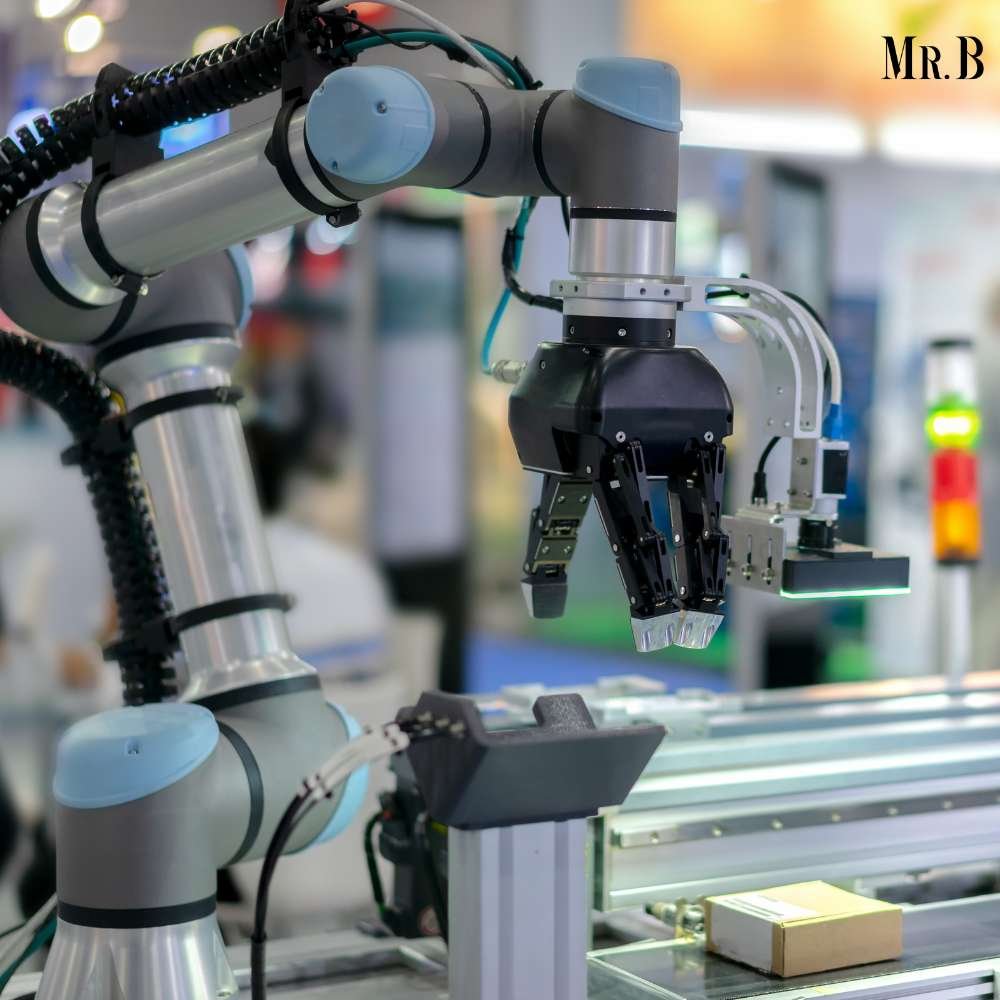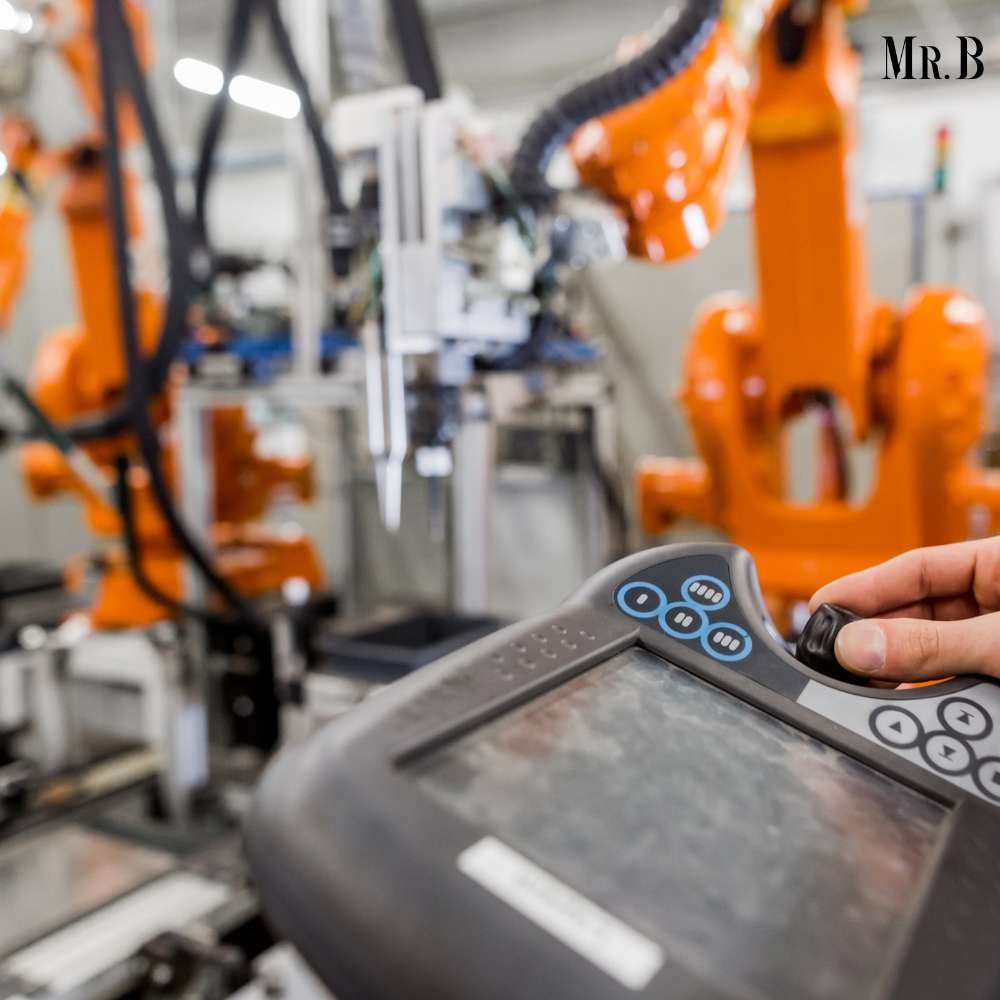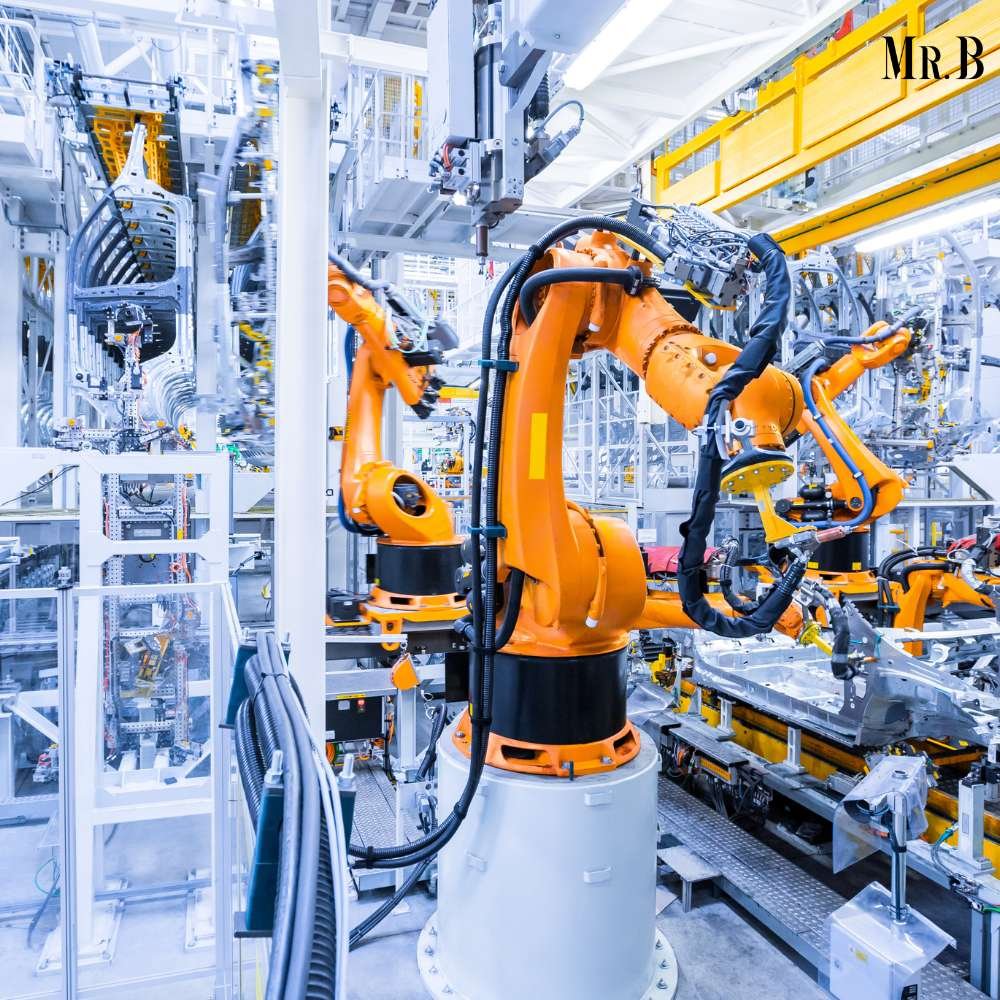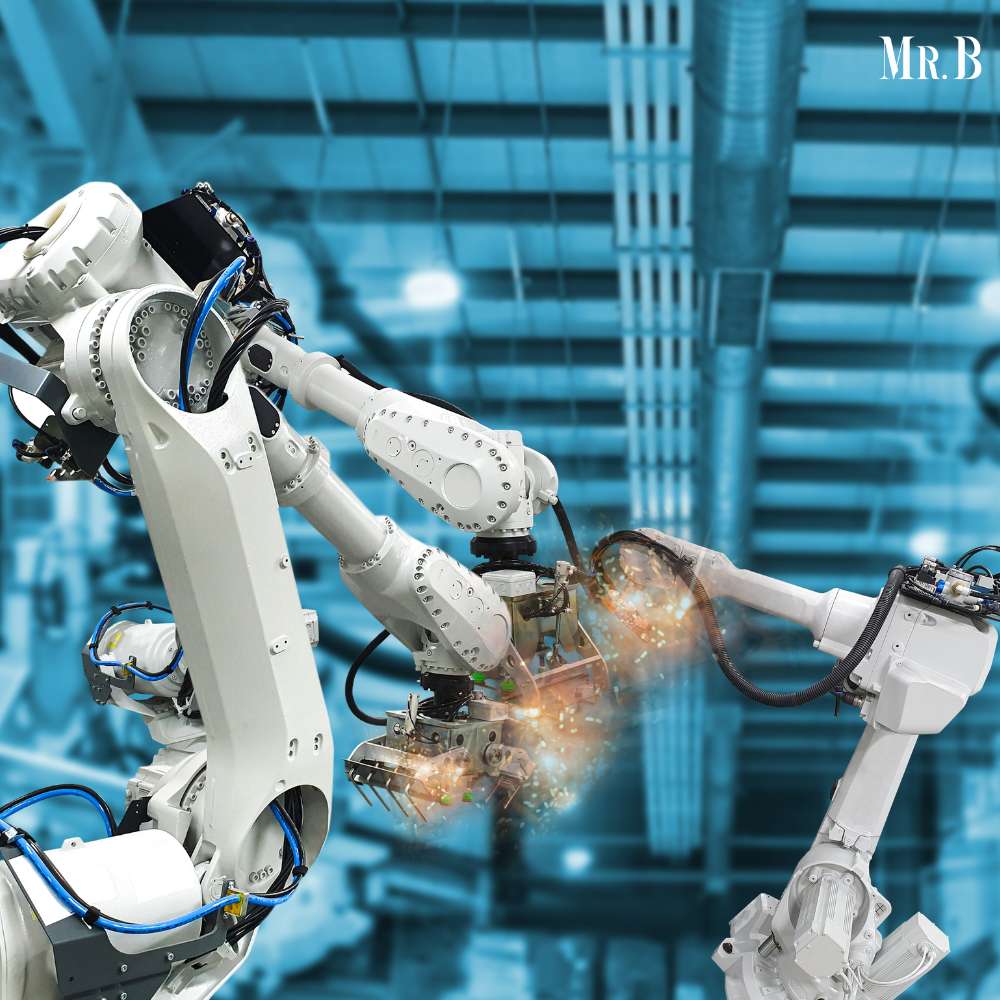Industrial robots are omnipresent. We consume the goods manufactured by these robots unknowingly. In the ever-evolving landscape of modern manufacturing, industrial robots have emerged as the unsung heroes, transforming assembly lines and production processes with unparalleled precision and efficiency. As we delve into the intricate world of industrial robots, we unravel the fascinating journey of how these machines are taught to perform tasks, the evolution that brought us to this point, and why they have become indispensable in the realm of manufacturing.
Teaching Industrial Robots: The Art of Programming
At the heart of industrial robotics lies the art of programming. Unlike human workers, robots require meticulous instructions to execute tasks flawlessly. The process begins with skilled programmers inputting a series of commands into the robot’s control system. This programming language, often a variant of C++ or a proprietary language, serves as the robot’s guide, dictating its every move with mathematical precision.
The Industrial Robot Evolution: A Journey of Innovation
The journey of industrial robots dates back to the mid-20th century when these mechanical marvels first stepped onto the manufacturing stage. Initially, robots were limited to simple, repetitive tasks. However, with technological advancements, their capabilities expanded exponentially. Today’s robots are equipped with sensors, artificial intelligence, and adaptive learning, enabling them to handle complex operations with finesse.
The pivotal moment in the evolution of industrial robots was the introduction of computer numerical control (CNC) in the 1970s. CNC technology allowed for greater programming flexibility, paving the way for robots to undertake a diverse range of tasks. As computing power surged, so did the capabilities of industrial robots, making them more intelligent, adaptable, and safer to work alongside human counterparts.

Industrial Robots: Making Manufacturing a Breeze
The advent of industrial robots has undeniably revolutionized the manufacturing landscape, making it more efficient, cost-effective, and reliable. These mechanical prodigies excel in tasks that demand precision, repeatability, and speed – characteristics that humans, despite their skill and dedication, may find challenging to maintain consistently.
The incorporation of these robots in manufacturing processes has significantly reduced production times and increased output volumes. Their tireless work ethic ensures round-the-clock operation, minimizing downtime and maximizing productivity. The result? A seamless, streamlined manufacturing ecosystem where precision meets productivity.
Why Industrial Robots Are Crucial: The Importance Unveiled
The importance of industrial robots in the manufacturing sector cannot be overstated. Their prowess in performing repetitive and intricate tasks not only accelerates production but also enhances the overall quality of manufactured goods. The following key factors elucidate the critical role of industrial robots:
1. Precision and Accuracy:
Industrial robots are designed to execute tasks with unparalleled precision, ensuring that every product meets the exacting standards of quality and consistency.
2. Increased Efficiency:
Robots can tirelessly perform tasks without succumbing to fatigue, ensuring a continuous and efficient workflow that significantly outpaces human capabilities in certain domains.
3. Safety:
By taking on hazardous and dangerous tasks, industrial robots contribute to a safer working environment for human workers. This leads to a reduction in workplace accidents and ensures a healthier, more secure workplace.
4. Cost-Effectiveness:
While the initial investment in industrial robots may be substantial, the long-term cost-effectiveness cannot be ignored. The efficiency gains, reduced error rates, and increased production outweigh the upfront costs.

5. Flexibility and Adaptability:
Modern industrial robots are designed to be versatile, and capable of adapting to various tasks with minimal reprogramming. This flexibility allows manufacturers to reconfigure production lines swiftly in response to changing demands.
6. Consistency in Production:
Industrial robots excel in maintaining consistent output, eliminating the variability that may arise from human factors. This consistency is invaluable in industries where product uniformity is paramount.
The Mechanism Unveiled: How Industrial Robots Process Instructions?
The mechanism through which industrial robots process instructions is a symphony of precision engineering and advanced computing. At its core, a robot’s control system interprets the programmed instructions and translates them into a series of movements and actions. Here’s a step-by-step breakdown of the process:
1. Programming:
Skilled programmers input commands using a programming language that is compatible with the robot’s control system. This includes specifying the sequence of movements, the speed of execution, and any conditional responses.
2. Sensor Integration:
Modern industrial robots are equipped with an array of sensors, such as cameras, pressure sensors, and proximity sensors. These sensors feed real-time data to the robot’s control system, allowing it to adapt to its environment and make decisions on the fly.
3. Path Planning:
The control system calculates the optimal path for the robot to follow based on the programmed instructions and real-time sensor data. This ensures efficient movement and avoids collisions.

4. Execution:
Once the path is determined, the robot’s actuators and motors come into play. These components work in harmony to execute the programmed movements with precision, whether it’s welding, assembling, or handling materials.
5. Feedback Loop:
Throughout the process, the robot continuously receives feedback from its sensors. This feedback loop allows for adjustments in real-time, ensuring that the robot can adapt to changes in the environment or unexpected obstacles.
Conclusion:
The phrase “industrial robots” resonates with progress, innovation, and a transformative shift in the manufacturing landscape. From their humble beginnings to the sophisticated machines of today, industrial robots have become the linchpin of modern manufacturing, embodying efficiency, precision, and adaptability. As we navigate the complexities of the Fourth Industrial Revolution, industrial robots stand as a testament to human ingenuity and the relentless pursuit of excellence. Their impact on manufacturing processes is not just a technological marvel; it’s a paradigm shift that propels industries toward new horizons of productivity and quality.







